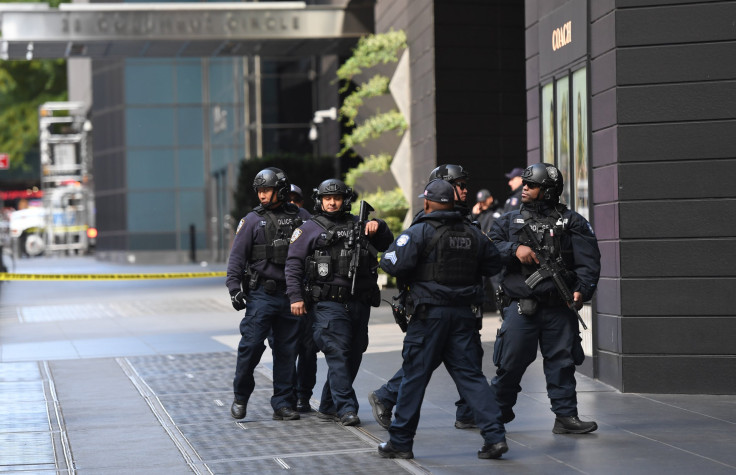Bomber Who Targeted Obama, Clinton, CNN, May Have Unknowingly Left Clues: Experts

A nationwide manhunt was launched after explosive devices were mailed to former President Barack Obama, former Secretary Of State Hillary Clinton and the CNN’s Time Warner building in New York on Tuesday. The FBI determined that the packages were sent by the same sender who mailed a similar homemade pipe bomb to political activist and billionaire businessman George Soros on Monday.
All the packages were safely intercepted before any individuals were harmed. Since the attempted attacks, multiple experts on counterterrorism and criminal justice have spoken out, reiterating the fact that they had no doubts that the bomber will be caught by authorities.
Potential leads, clues left by bomber
While sending explosive devices or harmful chemical agents via mail shows the suspect's intention to implement his or her plan of hurting the targeted individual from behind a mask of anonymity, Tod Burke, a retired criminal justice professor and former Maryland police officer, told NBC News that the suspect unknowingly leaves a range of clues that could lead investigators right back to the sender of the mail.
"This is a method they feel they can do anonymously, even though they’re really not anonymous. They are leaving evidence, they’re leaving telltale signs," he said. "There's always a signature somewhere. Bombs and things like that, there are signatures, as much as they may try to avoid it. In fact, sometimes by trying to avoid it, they're leaving more signatures."
In the most recent example, none of the devices exploded, which meant that FBI could potentially extract fingerprints and DNA traces such as hair or fiber samples, traces of sweat, saliva or skin cells from the packages for analysis. Even the handwriting on the package can help investigators narrow down the personality as well as the nationality of the sender.
Here are some other pics of the packages obtained by CNN including those intended for Soros and Obama. The envelope sent to Brennan at CNN contained white powder that authorities now believe may be pyrotechnic powder believed to be in the pipe bomb pic.twitter.com/8qv3NSSvmE
— Jim Acosta (@Acosta) October 25, 2018
According to ABC-affiliated KTRE, the packages delivered to Soros and CNN’s New York office were delivered by hand, the latter also being delivered by a courier. Surveillance footage could help the FBI track down the person who delivered the package.
In addition, the U.S. Postal Service itself can lead the FBI to the potential location where the package was sent from, using its imaging system that photographs and tracks each piece of mail processed across the country.
All the bombs sent out in the case were similarly built. The FBI will likely take the devices apart to examine the components such as the wiring, the initiating system, the type of pipe used, and see if they match with any of the devices used in bomb threats against politicians and other recognized entities in the past. They might also track the serial numbers, if any, left on the parts and hunt down the maker of the materials.
Bomber’s profile
According to criminology experts who spoke to NBC News, it was too early for the FBI to determine a profile of the bomber who sent the array of packages on Tuesday.
"You have to be careful. While it may well be the case that this is some radical conservative Republican, investigators are going to do a two-track investigation," Van Zandt said. "They'll say yes, that is who it is. Or, what if it's someone trying to push us that way, but it's the exact opposite?"
Henry Willis, associate director of the nonprofit think tank RAND Corporation's homeland security research division, echoed Zandt’s opinion, adding that there could be an array of factors at work when it came to the bomber’s motivation behind the attack.
“One thing history tells us is not to jump to conclusions about motivations. It also shows us that there could be many potential motivations,” he said.
While political leanings of the case might not play a major role in decoding the motivation of bomber, it could lead the authorities to take a better look at the individuals who made threats on social media against the targets, Mary Ellen O’Toole who profiled Ted Kaczynski, the Unabomber, for the FBI, said.
“[The suspect could be] someone that is very angry about the politics in the country and specifically against these individuals,” O’Toole said. "The reason that that’s important is because there may have been some effort prior to mailing and placing these bombs, to contact these people, either through a letter or through posting something on Facebook.”
The fact that the person used handmade pipe bombs as the weapon of attack, also did not say much about his or her intellectual capabilities or training in bomb-making.
Ralph Basham, former director of Secret Service told Vox: “The internet makes that endeavor pretty simple. The material that they used to construct these bombs is readily available, and with a little bit of effort, they can put the explosives together. There are step-by-step instructions on the web on how to do this. Anyone with minimum intelligence can learn how to make a bomb.”
In addition, Eric Witzig, a retired homicide detective with the D.C. Metro Police, former FBI crime analyst and the vice chairman of the Murder Accountability Project, told NBC News that there was a high possibility that bomb-maker had a terrorist-streak in him or her, who fed off the fear and panic generated across the nation and would be closely following the news coverage surrounding the incidents.
© Copyright IBTimes 2024. All rights reserved.












